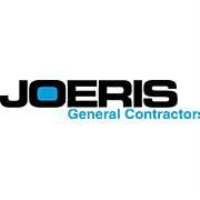Standard Operating Procedure: A Must Have For Company Growth
The term ‘standard operating procedures’ might evoke a yawn from the vast majority of your employees. But if your firm is on any sort of growth or expansion curve, SOP’s could be a critical piece in your ability to navigate the challenges that growth brings – especially if your firm’s pace of growth is accelerated.
SOP’s not only establish business practices and processes, they also communicate responsibility and ensure consistency – two key factors for success in all companies, but especially those managing growth. Organizational leaders agree that well-run businesses need clearly documented operating procedures.
What NOT to Do When Writing SOP’s1
There are numerous mistakes companies can fall into when writing SOP’s. Here are a few to avoid:
- Don’t let your procedures become ‘corporate speak.’ They should NOT be written by Executives or even Directors. SOP’s need to be written by personnel that actually perform the processes being described.
- Don’t forget to include an explanation as to WHY processes are performed in a particular way. It’s not enough to say how something should be done. People are not automatons. They want to know that procedures are based on reason and logic.
- Only using text to describe procedures is a big turn off. There is no quicker way to get your team to stop reading and therefore, not use the SOP’s.
- Using negative language is another barrier to SOP usage. It’s human nature to want to ignore negative language. Instead of describing what NOT to do, try focusing on steps that should be implemented.
What You Should Do When Writing SOP’s1
A few tips for making your procedures usable:
- Have someone outside your company read the SOP’s for readability and comprehension. Are the steps easy to follow and is the language readily understandable?
- Ask WHY? If you can’t answer why a process/step is done in a specific way, that’s a problem. Oftentimes, the process of writing the SOP’s highlights redundant and/or inefficient actions in your firm. It’s an opportunity to tighten up procedures and eliminate waste.
- Test Run the SOP’s. Try to follow the steps as you have written them. Do they work? Do they produce the desired result? Do they make sense?
- Incorporate graphics when possible. Take photos or screenshots. Create videos. Most of us learn better visually so play to this by making the SOP’s more than just words on paper.
Benefits of SOP’s
The benefits of Standard Operating Procedures to any business are multifold.
- They provide the basis for training of all new employees. This is critical if your firm does not have a formal training program or orientation process.
- SOP’s contribute to consistency of experience for your customers/clients. Regardless of the business you are in, your customer wants to know they will have the same experience each time they buy regardless of which employee they are interacting with. SOP’s can help ensure this consistency of experience or product.
- They provide continuity in the event of employee loss. SOP’s will make it easier for someone to step into the void and get up to speed more quickly.
While the task of writing SOP’s can be daunting for any firm, they are invaluable as your business grows. To learn more about how to undertake the task of writing Standard Operating Procedures for your company, check out our SOP White Paper on our website at Joeris.com/news.
1http://www.digicast.com.au/blog/bid/88627/5-Mistakes-Companies-make-with-their-Standard-Operating-Procedures
Angela Cardwell is the Chief Marketing Officer for Joeris General Contractors, Ltd., a 50-year old commercial construction manager that recently undertook the task of SOP writing for its entire firm.
Joeris General Contractors, LTD
-
Angela Cardwell Chief Marketing Officer
- July 27, 2017
- (210) 494-1638
- Send Email

